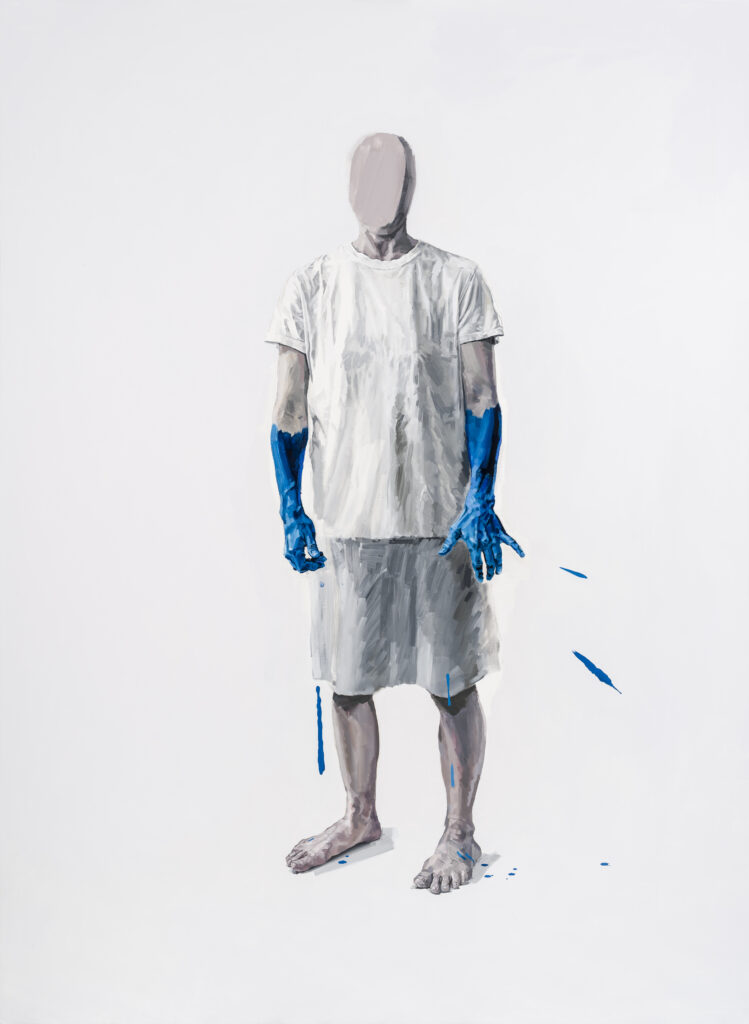
Alice Kask (1976) is a painter whose work is often associated with new figurative painting. Kask’s paintings are characterised by a sketch-like quality and taking the quotidian into a territory where it becomes detached from reality. At first glance, the paintings seem to solely centre on the figure and human body, however, a focus on space and environment is nevertheless always there – through shadows, black holes, images rising out of emptiness, and juxtaposition of planes and spaces. The power of her pieces relies in the inseparability of the work and the physical object, the image’s contact with the underlying surface or detachment from it.
In the interaction between absolute generalisation and anatomical detail, Kask’s approach to human becomes agonising, yet powerful, forging a monumentality that consists of an equal part of existential angst. Kask’s world is schematic, the fine modelled figure is in contrast with the background that refuses to give any details on the scene, the image seemingly only existing in a vacuum of its own making. Her grey paper beings and male figures act as if guided by an unseen force.
Kask has always depicted her figures as anonymous basic forms, dressed in various garments carrying the spirit of the era. In 2005, the works exhibited at Hobusepea Gallery depicted suits, in the 2015 exhibition at Tallinn City Gallery, however, these were replaced by T-shirt, tracksuit and trainers. With the exhibition “Murdosa” (Fraction, 2011) alongside her interest in relations between objects, figures and space, the artist added another element, time, to her work – capturing the moment, the fraction of a second and presenting it on a static two-dimensional surface.
At the show “Alice, Neeme & Jass” (2018) in Kunsthalle Helsinki, the audience was greeted by Kask’s large-scale painting “Kekkoneni käsi” (Kekkonen’s Hand), a sketch of a human silhouette with the right hand waving hello. The hand as an archetypal tool for making a mark has occurred in Kask’s work before, referencing ways of perceiving the human body and environment and the shifts between the two.
Alice Kask graduated from the painting department of the Estonian Academy of Arts (BA 1999, MA 2002). She has been exhibiting since 1997, including the Prague Biennale (2007) and in “Painting in Process” (2010) in Kumu, a show dedicated to the latest developments in painting. Kask’s works are part of collections of the Art Museum Estonia, Tartu Art Museum, the city of Tallinn, Neumünster Museum and those of private collectors. Following a large solo exhibition at the Estonian Museum of Contemporary Art in 2016, her most recent representative exhibitions have been held at Taidehalli in Helsinki (2018) and Rüki Gallery in Viljandi (2020). Kask has been awarded the Konrad Mägi Prize in 2003 and the Vaal Gallery’s Young Artist Prize in 2005.